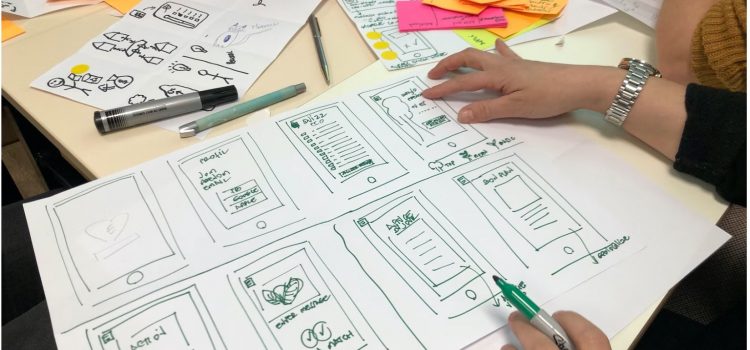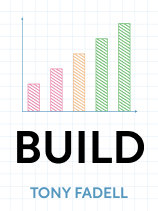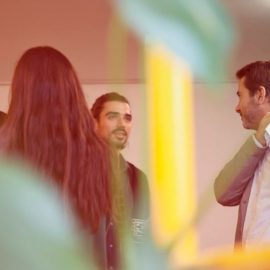

This article is an excerpt from the Shortform book guide to "Build" by Tony Fadell. Shortform has the world's best summaries and analyses of books you should be reading.
Like this article? Sign up for a free trial here.
How do you build a world-changing product-based business? How do you set the right foundation and then weather the storms that come?
Entrepreneur Tony Fadell answers these questions and more in Build. The book is part career encyclopedia and part memoir, detailing Fadell’s journey building the iPhone and starting Nest, a smart home device company that he sold to Google for billions.
Keep reading to learn how to build a product-based business from a successful business veteran.
How to Build a Product-Based Business
A product-based business is a business that sells a tangible item. First, we’ll discuss the three stages of building one: Get ready, discover the product’s story, and release and evolve your product. Then, we’ll describe Fadell’s strategies for handling three major problems you might face: a lack of funds, a lack of work-life balance, and a catastrophe.
Stage #1: Get Ready
Fadell asserts that being ready to start your own company requires that you have an incredible idea. A good idea proposes a solution to a real, tangible problem that people face consistently in their daily lives, and it has a clear why, or reason, for existing. Moreover, it’s something you can’t stop thinking about. If you’re going to commit years of your life to an idea, do research. What exactly are you getting yourself into? What issues might you face, and how might you get around those? If, after at least a month, you’re still excited by the idea, that’s a great sign that you should pursue it.
(Shortform note: Not all experts believe that having a great company starts with a great idea. In Built to Last, Jim Collins and Jerry I. Porras argue that you should initially focus not on designing a great product but on designing a great organization. As long as you have that, you can try several products and stumble before finding your footing with the right product. But if you do want a clear product idea, The $100 Startup author Chris Guillebeau recommends that you find one by deciding upon a target audience, looking for ways that you can solve a problem they have, and paying attention to trends—like new technologies—that might spark ideas.)
Additionally, Fadell argues that you must have the right experience and the right people. You have the right experience if you’ve worked at a startup and learned how to effectively hire people you need when you need them. You should have also worked at a large organization so you have some understanding of the issues, such as corporate drama, that large organizations face. You have the right people if you have an experienced, trustworthy mentor and a cofounder who can support you. You should also have a clear list of five amazing people you can hire.
(Shortform note: Fadell’s advice applies if you plan on growing your company from a startup into a large organization and thus need the experience to handle both. But if you started what The $100 Startup’s Guillebeau calls a microbusiness—a business that typically only involves one person—you wouldn’t need this experience, and you’d only ever need to hire others much later in the process if you wanted to expand a successful business. That said, experts suggest that you might still want a mentor, who can help you navigate unexpected challenges as you start your business.)
Stage #2: Discover Your Story
Once you have a good idea for a product, the experience to start a company, and the right people with which to build them, how do you start building the product? The most crucial step, Fadell argues, is to discover your story. In other words, you must figure out who wants your product and why, design every conceivable aspect of your product around that story, and test to ensure that story works.
Fadell explains that thinking through the whole story with your team (especially marketing) is essential because it drives both what you build and how you sell it—to investors and later to consumers. Many companies focus too much on the product itself because that’s what they think they’re selling; but in reality, a company sells an experience with a product—from how the customer installs it to the customer service they encounter if they run into trouble. Thinking through every aspect of that story will help you build and provide the best possible experience.
To tell an effective story, include three elements. First, remind people of the annoyance you’re solving so that they can get excited about the solution. Second, provide both logical and emotional reasons that your solution is the best possible choice. Third, simplify technical concepts so that your customers can easily grasp them and relate them to others. Try using analogies. If you struggle to determine your story, try writing a press release to clarify what you want your product to do and why it matters.
Stage #3: Release and Evolve the Product
The next step is to release the product. Fadell asserts that what you focus on in each release will depend on which product generation you’re working on.
The First Generation
Fadell asserts that your first-generation product must be “disruptive”—it must represent some sort of fundamental shift in how people normally do things. You may need to disrupt multiple elements of the customer experience. But don’t disrupt so many elements that your product isn’t immediately understandable.
To create a disruptive product, Fadell recommends that you work within clear limitations. Keep your team and budget small; the larger these become, the more likely you’ll waste time and money building unnecessary features. Additionally, set a clear timeline: It should take between nine and 18 months to ship your first product. Set a deadline for completing the product. If, when you reach that point, your product does almost everything you wrote in your press release, it’s ready to launch.
If your launch fails, figure out why. Examine the data to determine whether your intuition was flawed or if something external harmed your launch. Once you know why it failed, apply these lessons to your next launch—whether it’s a new version of this product or a new project entirely.
The Second Generation
When creating your second-generation product, don’t focus on disruption. Instead, improve upon the first generation without drastically changing the features that your customers have grown accustomed to. Now that you have real data from actual customers, making these improvements will rely more on this data than your opinion.
Fadell recommends that you release updates to your products on a predictable schedule; that way, your customers will know when to expect new products, and your team will have clear deadlines to work toward. He recommends releasing one to three smaller updates and one large launch each year.
The Third Generation
By the third-generation product launch, focus on making money. Your second-generation product should allow you to recoup your investments; by this point, you should have fixed the issues in the first generation and made a better product that works well for your customers. The third-generation product is when you focus on profitability.
Handling Problems
No matter how well your launches go, you’ll likely face problems in your business. Fadell recommends strategies for three common ones: a lack of funds, a lack of work-life balance, and catastrophes.
Lack of Funds
You might need to find investors. To do so, Fadell first recommends that you have a clear plan regarding how much money you desire and what specifically you’ll use it for. However, you should have enough money to last for a few months since that’s how long finding the right investors will take.
Lack of Work-Life Balance
Fadell asserts that it’s essential that you carve out some time for yourself so that you’re able to lead effectively. Get adequate sleep, nutrition, and exercise. If you’re overwhelmed with administrative tasks, hire an assistant. Once the business is up and running, take vacations.
Catastrophes
When you encounter a catastrophe, your first priority is to fix the problem. As a leader, you should dive into the everyday work your team does so that you can figure out with them how to fix it. You must also communicate effectively with your customers, apologizing if necessary. Only once you fix the problem should you examine why it happened and adjust your processes to ensure that something similar doesn’t occur again.

———End of Preview———
Like what you just read? Read the rest of the world's best book summary and analysis of Tony Fadell's "Build" at Shortform.
Here's what you'll find in our full Build summary:
- Entrepreneur Tony Fadell's memoir, from the iPhone to Nest
- Advice for succeeding in every stage of your career, from beginners to CEOs
- Tips for building a product-based business and a great team






